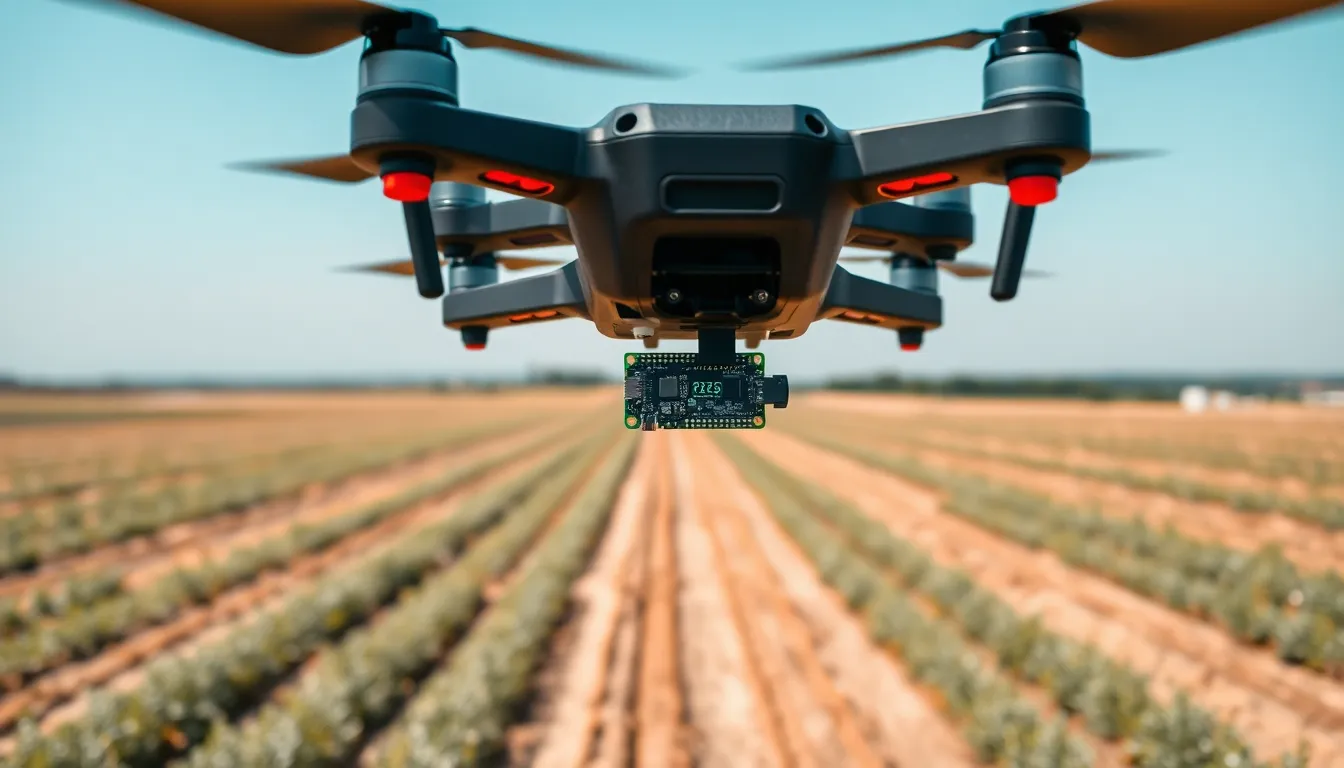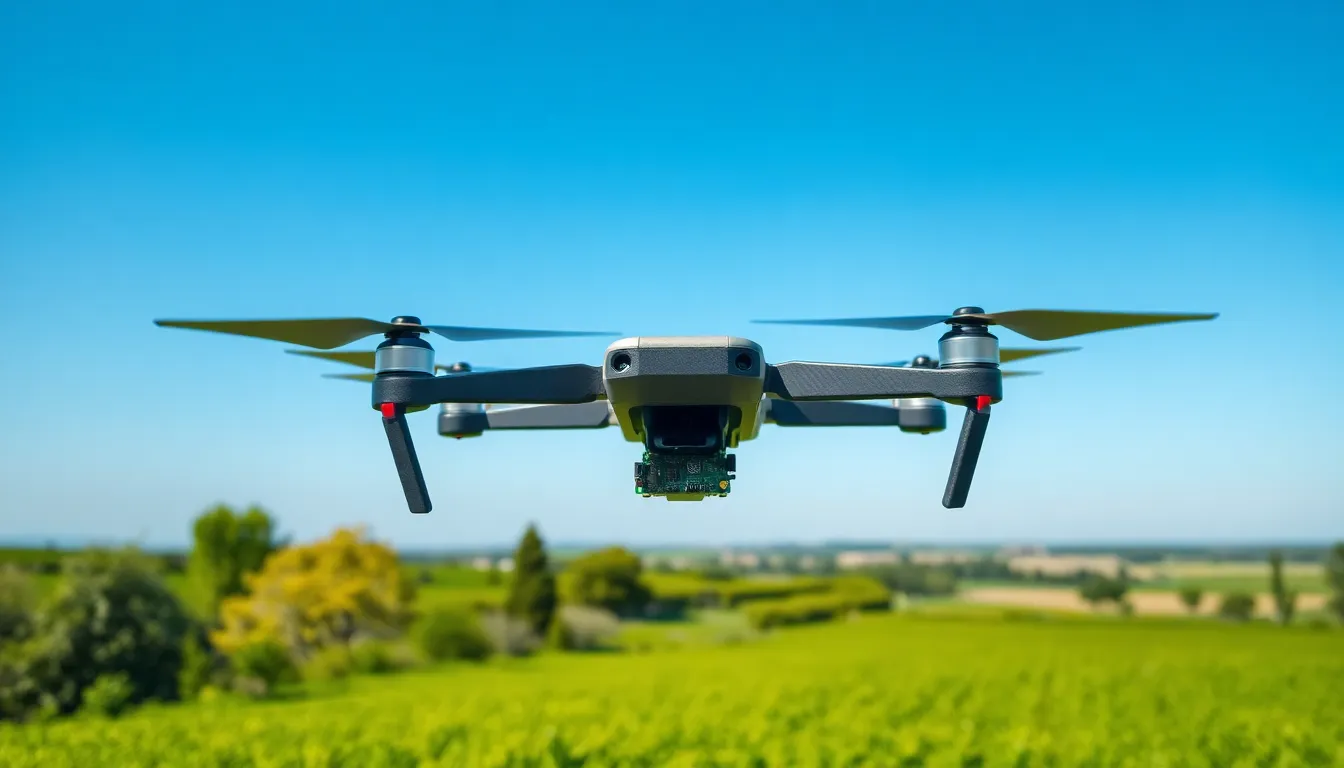Table of Contents
ToggleEver thought about soaring through the skies with a drone that boasts the power of a Raspberry Pi Zero? Imagine combining cutting-edge thermal imaging technology with the versatility of a mini-computer. Not only will you impress your friends and neighbors, but you’ll also get to explore a whole new world of aerial possibilities. Let’s jump into the fascinating realm of Raspberry Pi Zero thermal drones, where innovation meets fun.
What Is a Raspberry Pi Zero Thermal Drone?

A Raspberry Pi Zero thermal drone is essentially a lightweight unmanned aerial vehicle equipped with thermal imaging capabilities powered by the compact and efficient Raspberry Pi Zero computer. These drones leverage the low-cost, small form factor of the Pi Zero to create an affordable yet dynamic platform for various applications. Ideal for hobbyists and professionals alike, this type of drone allows users to capture heat signatures and provide insights into a variety of scenarios, from search and rescue missions to agricultural monitoring. A Raspberry Pi Zero thermal drone is not just a gadget but a tool that enhances your ability to see the world through a different lens.
Key Components of the Drone
To successfully build a Raspberry Pi Zero thermal drone, understanding its main components is crucial. Here’s a breakdown of the essential elements:
- Raspberry Pi Zero: At the core of the drone, this mini-computer executes commands, processes data, and oversees the onboard systems.
- Thermal Camera: A vital addition, this allows the drone to capture thermal images. Cameras like the FLIR Lepton are popular choices for their compactness and effectiveness.
- Flight Controller: This component governs the drone’s flight dynamics, ensuring stability and control in the air.
- Battery: A lightweight but powerful battery is necessary to keep the drone airborne for extended periods without adding excessive weight.
- Frame: The structure of the drone, often made from lightweight materials like carbon fiber or plastic, provides support while minimizing weight.
- Propellers and Motors: Providing lift and propulsion, the choice of propellers and motors affects both performance and efficiency.
Each of these components plays a critical role in the functionality and performance of the Raspberry Pi Zero thermal drone.
Benefits of Using Raspberry Pi Zero in Drones
Utilizing the Raspberry Pi Zero in drone technology offers myriad benefits. Here are some compelling reasons to consider this setup:
- Cost-Effective: One of the most attractive features is its affordability. Compared to traditional drone systems, a Raspberry Pi Zero setup is considerably cheaper, making it accessible to hobbyists and startups.
- Flexibility: The Raspberry Pi Zero allows for a customized approach. Users can tweak software and hardware to fit their specific needs, leading to unique configurations.
- Lightweight Design: With its compact size, the Pi Zero doesn’t weigh down the drone, allowing for longer flight times and improved maneuverability.
- Open Source: A vast community supports Raspberry Pi users. This means plenty of resources, guides, and forums are available for troubleshooting and innovation.
- Versatile Applications: From wildlife monitoring to building inspections, the Raspberry Pi Zero can power diverse drone applications, making it a jack-of-all-trades in the UAV world.
All these factors contribute to making the Raspberry Pi Zero a popular choice for thermal drone enthusiasts.
Thermal Imaging Technology Explained
Thermal imaging technology captures infrared radiation emitted by objects and converts it into a visual representation of heat. Here’s how it works in a nutshell:
- Detection: All objects emit infrared radiation. The amount of radiation correlates with temperature, hotter objects emit more.
- Conversion: Thermal cameras use specialized sensors to detect this radiation and deliver images based on temperature variations.
- Visualization: The processed data is then displayed as a thermal image, where different colors represent varying temperature ranges.
In the context of drones, thermal imaging proves invaluable. It allows users to see through smoke, fog, or darkness, making it ideal for various applications such as fire prevention or energy audits.
Building Your Own Raspberry Pi Zero Thermal Drone
Constructing your own Raspberry Pi Zero thermal drone can be a rewarding DIY project. Here’s a basic outline to get started:
- Gather Components: Assemble all necessary items, including the Raspberry Pi Zero, a thermal camera, battery, frame, motors, and propellers.
- Assemble the Frame: Attach the Raspberry Pi Zero and other components securely to the drone frame. Ensure balanced weight distribution for stability.
- Connect the Components: Wire the thermal camera and flight controller to the Raspberry Pi Zero according to the specifications. Testing connections early helps avoid issues later.
- Install Software: Load the necessary software and libraries onto your Raspberry Pi. Ensure you have the right drivers for the thermal camera and any other peripherals.
- Test Flight: Once assembled, conduct test flights to assess performance. Start with short, low-altitude flights to ensure everything operates correctly.
By following these steps, enthusiasts can craft their own Raspberry Pi Zero thermal drones suited to their unique needs.
Applications and Use Cases
The versatility of Raspberry Pi Zero thermal drones opens up a wealth of applications. Some exciting use cases include:
- Search and Rescue Operations: Thermal drones can quickly locate missing persons, even in challenging environments such as dense forests or disaster-struck areas.
- Agricultural Monitoring: Farmers can use thermal drones for crop health analysis, irrigation management, and livestock monitoring, enhancing productivity and resource management.
- Building Inspections: Drones equipped with thermal cameras can identify heat loss in structures, helping contractors make informed energy efficiency improvements.
- Wildlife Tracking: Researchers can study animal behaviors and habitats with minimal disturbance, leveraging the unique vantage point of aerial views.
Each application demonstrates the incredible potential of integrating Raspberry Pi-based thermal drones into various industries.
Challenges and Considerations
Venturing into the world of Raspberry Pi Zero thermal drones isn’t without challenges. Here are some considerations to keep in mind:
- Limited Processing Power: The Raspberry Pi Zero, while powerful for its size, has limitations in handling complex tasks compared to its bigger counterparts.
- Battery Life: Ensuring ample flight time is crucial. Choosing the right battery that balances weight and capacity is a must.
- Weather Dependency: Extreme weather conditions can affect drone performance and camera accuracy, so having a backup plan is important.
- Compliance with Regulations: Users must familiarize themselves with local drone laws to ensure safe and legal operation.
Navigating these challenges is essential for achieving successful and safe drone operations.




